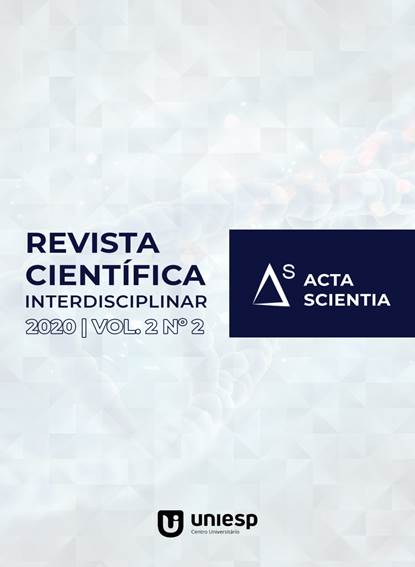SOBRE LASERS SEMICONDUTORES
Resumo
O laser semicondutor surgiu em meados de 1960, tornando-se um dos mais difundidos dispositivo já desenvolvido a partir de pesquisa básica. Este instrumento ótico apresenta algumas características próprias: boa estabilidade na potência, pequena dimensão, vasta faixa de cobertura espectral, baixo consumo de energia, baixo custo e possibilidade de modulação direta na corrente de injeção. O laser semicondutor se apresenta como importante ferramenta para pesquisa científica na área de física atômica, espectroscopia de alta resolução, área médica, como também em leitores de código de barras, DVDs e CD-players, trenas eletrônicas, indicadores de nível, sensores industriais, dentre outros. Este artigo tem como objetivo fazer uma breve revisão sobre conceitos básicos da teoria laser aplicada particularmente aos lasers de semicondutores.
Palavras-chave: Lasers semicondutores. Instrumento ótico. Ótica.
Referências
ALBERT EINSTEIN. Zur quantentheorie der strahlung. Physikalische Zeitschrift, 18:121, 1917.
ALI JAVAN, William R Bennett Jr, and Donald R Herriott. Population inversion and continuous optical maser oscillation in a gas discharge containing a he-ne mixture. Physical Review Letters, 6(3):106, 1961.
C Monroe, W Swann, H Robinson, and C Wieman. Very cold trapped atoms in a vapor cell. Physical Review Letters, 65(13):1571, 1990.
Carol E Tanner and Carl Wieman. Precision measurement of the stark shift in the 6S1/2 → 6P3/2 cesium transition using a frequency-stabilized laser diode. Physical Review A, 38(1):162, 1988.
Ch Harder, KY Lau, and A Yariv. Bistability and pulsations in cw semiconductor lasers with a controlled amount of saturable absorption. Applied Physics Letters, 39(5):382, 1981.
David F Welch. A brief history of high-power semiconductor lasers. Selected Topics in Quantum Electronics, IEEE Journal of, 6(6):1470, 2000.
DE McCumber. Einstein relations connecting broadband emission and absorption spectra. Physical Review, 136(4A):A954, 1964.
Fernando Catalani. Caracteriza¸c˜ao de laser de diodo para espectroscopia de alta resolu¸ca˜o. Disserta¸c˜ao de mestrado, UNICAMP, 1997.
GHM Van Tartwijk and D Lenstra. Semiconductor lasers with optical injection and feedback. Quantum and Semiclassical Optics: Journal of the European Optical Society Part B, 7(2):87, 1995.
GJ Lasher. Analysis of a proposed bistable injection laser. Solid-State Electronics, 7(10):707, 1964.
Govind P Agrawal and Niloy K Dutta. Long wavelength semiconductor lasers. Van Nostrand Reinhold Co. Inc., New York, NY, 1986.
H Kawaguchi and G Iwane. Bistable operation in semiconductor lasers with inho- mogeneous excitation. Electronics Letters, 17(4):167, 1981.
H Kressel and H Nelson. Close-confinement gallium arsenide pn junction lasers with reduced optical loss at room temperature(close confinement gaas p-n junction lasers with reduced optical loss at room temperature). RCA review, 30:106, 1969.
HC Casey Jr and MB Panish. Heterostructure lasers. part a. fundamental principles.
Hiroshi Yasaka and Hitoshi Kawaguchi. Linewidth reduction and optical frequency stabilization of a distributed feedback laser by incoherent optical negative feedback. Applied physics letters, 53(15):1360, 1988.
I Hayashi, M Panish, and P Foy. A low-threshold room-temperature injection laser.
Marshall I Nathan, JC Marinace, RF Rutz, AE Michel, and GJ Lasher. Gaas injection laser with novel mode control and switching properties. Journal of Applied Physics, 36(2):473, 2004.
Marshall I Nathan, William P Dumke, Gerald Burns, Frederick H Dill, and Gordon Lasher. Stimulated emission of radiation from gaas p-n junctions. Applied Physics Letters, 1(3):62, 1962.
Maurice GA Bernard and Georges Duraffourg. Laser conditions in semiconductors.
NG Basov, ON Krokhin, and Yu M Popov. Production of negative temperature states in pn junctions of degenerate semiconductors. JETP, 40:1320, 1961.
NG Basov, WH Culver, and B Shah. Applications of lasers to computers. Laser Handbook, 2:1649, 1972.
Nick Holonyak Jr and SF Bevacqua. Coherent (visible) light emission from ga (as1- xpx) junctions. Applied Physics Letters, 1(4):82, 2004.
NV Karlov, ON Krokhin, and SG Lukishova. History of quantum electronics at the moscow lebedev and general physics institutes: Nikolaj basov and alexander prokhorov. Applied optics, 49(25):F32, 2010.
OLIVEIRA, Abinael de Brito. Lasers semicondutores sob injeção ótica ortogonalmente polarizada, 2014. 111 f. Dissertação (Mestrado em Física) - Universidade Federal da Paraíba, João Pessoa, 2014.
Physica status solidi (b), 1(7):699, 1961.
Quantum Electronics, IEEE Journal of, 5(4):211, 1969.
RN Hall, GE Fenner, JD Kingsley, TJ Soltys, and RO Carlson. Coherent light emission from ga-as junctions. Phys. Rev. Lett, 9:366, 1962.
Taciano Amaral Sorrentino. Dinaˆmica em frequˆencia de lasers semicondutores sob realimentac¸˜ao o´tica ortogonal e aplica¸ca˜o: Chaveamento todo-o´tico em frequˆencia. Disserta¸c˜ao de mestrado, UFPB, 2010.
Theodore H Maiman. Stimulated optical radiation in ruby. Nature Publishing Group, 1960.
TM Quist, RH Rediker, RJ Keyes, WE Krag, B Lax, Al L McWhorter, and HJ Zei- gler. Semiconductor maser of gaas. Applied Physics Letters, 1(4):91, 1962.
Zh I Alferov, VM Andreev, EL Portnoi, and MK Trukan. Alas-gaas heterojunction injection lasers with a low room-temperature threshold. Sov Phys Semiconductors, 3(9):1107, 1970.

